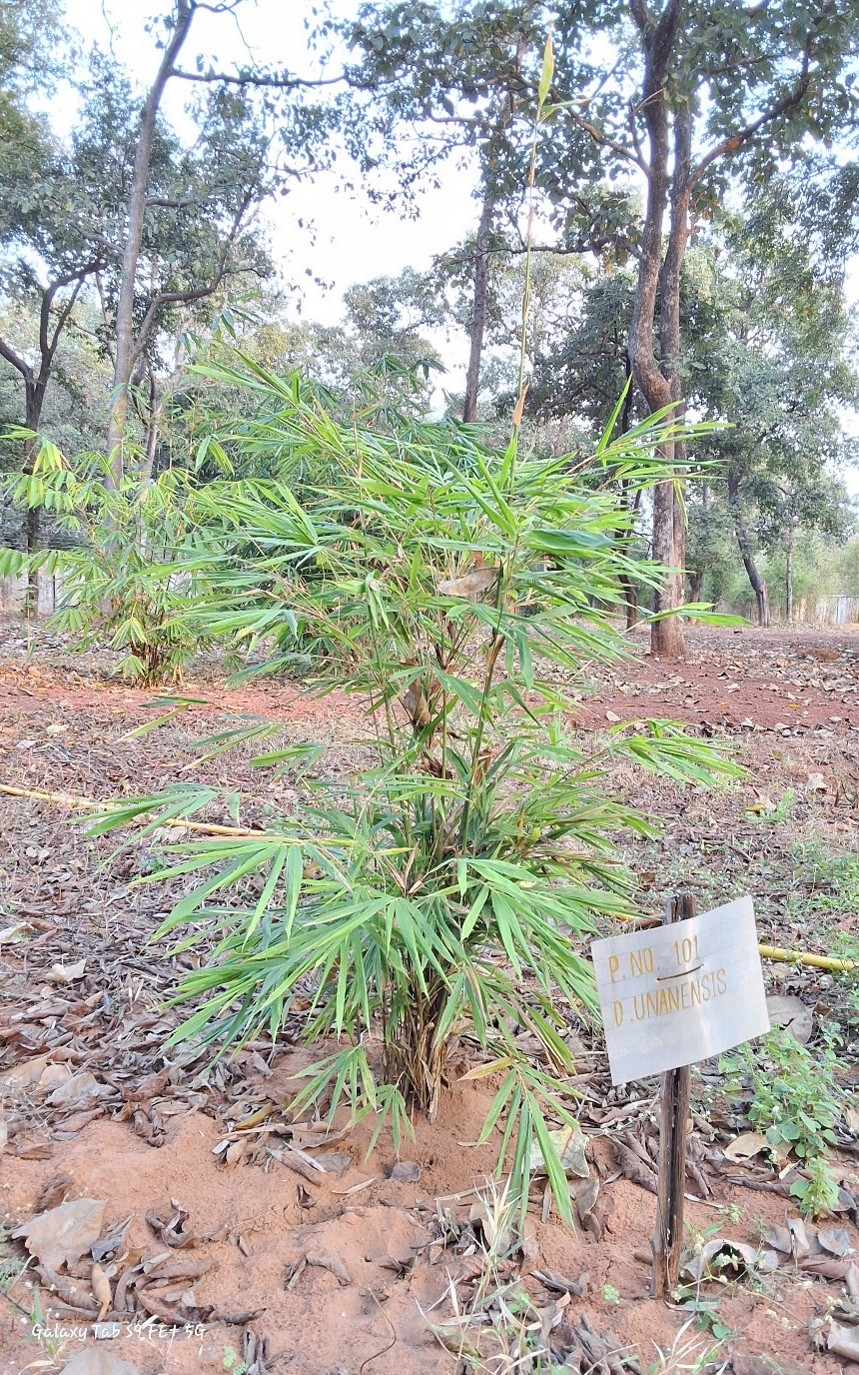Dendrocalamus yunnanensis

Dendrocalamus yunnanensis
Dendrocalamus yunnanensis commonly known as Yunnan Bamboo, is a large clumping bamboo species native to the subtropical forests and hilly regions of Yunnan Province in China. It typically grows at altitudes ranging from 500 to 1,800 meters in well-drained, fertile soils with a slightly acidic to neutral pH. This bamboo species thrives in areas that receive annual rainfall of 1,200 to 2,500 mm. The bamboo reaches a height of 10 to 15 meters, with culms that have a diameter of 8 to 12 cm. The culms start green and mature to yellowish-green, and its lanceolate leaves are 20 to 35 cm long and 3 to 5 cm wide. Its internode length ranges from 30 to 45 cm, and it is particularly noted for its smooth adaxial surface and slightly hairy abaxial surface.
The flowering cycle of Dendrocalamus yunnanensis is infrequent and unpredictable, with flowers appearing once every 40 to 50 years. This rare flowering event leads to limited seed production, making natural regeneration difficult. The bamboo is typically propagated through culm cuttings, clump division, or offsets, while tissue culture is sometimes used for mass propagation. Despite the rarity of flowering, Dendrocalamus yunnanensis is a strong and resilient species, making it suitable for various uses in construction and crafts. It is commonly used for building structures, scaffolding, and fences in rural areas. Additionally, the bamboo is utilized in the production of furniture, household items, and crafts, offering a sustainable option for local economies.
The young shoots of Dendrocalamus yunnanensis are edible and used in local culinary dishes, further enhancing its value. Beyond consumption, the bamboo's robust growth makes it ideal for controlling soil erosion, especially in hilly terrains. It is also a source of bamboo for paper and pulp production. Traditional uses of the bamboo include crafting tools, baskets, and other everyday objects. Its versatility and strength have made it an important resource not only for construction and craftwork but also for ecological and environmental management, contributing to sustainable land use and conservation efforts.
Listen Audio:
Need assistance? BRTC Faculty